Categoría "Networking"
Se han encontrado 32 Coincidencias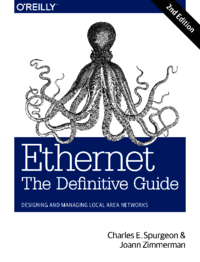
Ethernet: The Definitive Guide
Ethernet: The Definitive Guide
104 Visitas | 136 Descargas | 2014-12-10 22:18:20 | piturria
This is a book about Ethernet, the world’s most popular network technology, which allows you to connect a variety of computers together with a low-cost and extremely flexible network system. Ethernet is found on a wide variety of devices, and this wide?spread support, coupled with its low cost and high flexibility, are major reasons for its popularity.
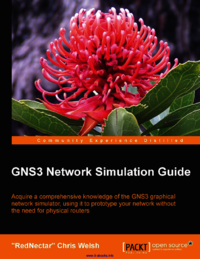
GNS3 Network Simulation Guide
Simulación de Redes
103 Visitas | 157 Descargas | 2014-12-22 18:35:43 | cbustillo
NS3 is an open-source Graphical Network Simulator used extensively by networking professionals to simulate networking devices such as Cisco, Juniper and Vyatta routers, along with Virtual PCs. GNS3 Network Simulation Guide gives you all the information you need to run a successful GNS3 simulation. You will be guided through the tricky installation pre-requisites and procedures involved in developing a simulated topology suitable for studying for Cisco CCIE Certification. We will also cover many useful tips and tricks which will help you make the most of your GNS3 simulator application.
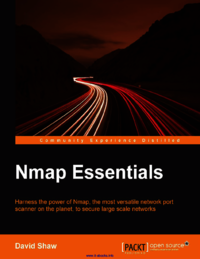
Nmap Essentials
Networking
103 Visitas | 145 Descargas | 2015-09-07 20:41:16 | cbustillo
Nmap is an extremely powerful network port scanner used to identify hosts on a network. Nmap is free, flexible, powerful, and easy to implement, which makes it a very convenient utility. This book demonstrates how to run basic and advanced scans, optimizing them to perform well in a variety of environments. Starting with an overview of Nmap, the reader will be guided through installation on popular operating systems. The book then explains how to use Nmap to run basic and advanced scans in addition to using the Nmap Scripting Engine (NSE). All this helps with optimizing Nmap performance in a variety of environments, eventually enabling the reader to integrate with other Nmap tools such as Nessus, Nikto, Burp Suite, and NSE versus NASL scanning. By the end of the book, the reader will have gained essential insights into network security analysis.
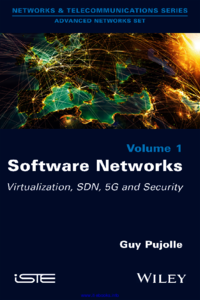
Software Networks
Networking
112 Visitas | 134 Descargas | 2015-11-27 14:27:55 | cbustillo
The goal of this book is to describe new concepts for Internet next generation. This architecture is based on virtual networking using Cloud and datacenters facilities. Main problems concern 1) the placement of virtual resources for opening a new network on the fly, and 2) the urbanisation of virtual resource implemented on physical network equipment. This architecture deals with mechanisms capable of controlling automatically the placement of all virtual resources within the physical network. In this book, we describe how to create and delete virtual networks on the fly. Indeed, the system is able to create any new network with any kind of resource. We will show how this architecture is compatible with new advances in SDN, new high-speed transport protocol like TRILL and LISP, NGN, IMS, Wi-Fi new generation, and 4G/5G networks. Finally, we introduce the Cloud of security and the virtualisation of secure elements (smartcard) that should definitely transform how to secure the Internet.
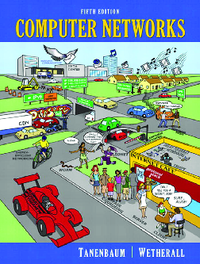
Computer Networks
110 Visitas | 83 Descargas | 2017-10-11 15:30:43 | ediaz
This book is now in its fifth edition. Each edition has corresponded to a different phase in the way computer networks were used. When the first edition appeared in 1980, networks were an academic curiosity. When the second edition appeared in 1988, networks were used by universities and large businesses. When the third edition appeared in 1996, computer networks, especially the Internet, had become a daily reality for millions of people. By the fourth edition, in 2003, wireless networks and mobile computers had become commonplace for accessing the Web and the Internet. Now, in the fifth edition, networks are about content distribution (especially videos using CDNs and peer-to-peer networks) and mobile phones are small computers on the Internet.
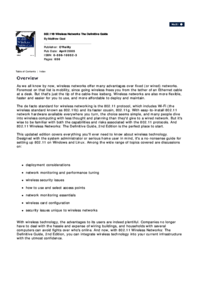
Wireless Networks: The Definitive Guide
77 Visitas | 70 Descargas | 2018-10-15 15:09:37 | ediaz
Este libro esta dirigido a los lectores que necesitan mas alla de los detalles técnicos de las redes inalalmbricas, desde su operación, su desarrollo y monitoreo.
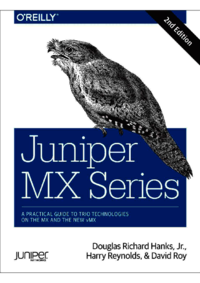
Juniper MX Series: A Comprehensive Guide to Trio Technologies on the MX
One of the most popular routers in the Enterprise and Service Provider market is the Juniper MX Series. The industry is moving to high-speed, high port-density Ethernet-based routers, and the Juniper MX was designed from the ground up to solve these challenges.
73 Visitas | 44 Descargas | 2019-02-21 21:05:19 | moliver
One of the most popular routers in the Enterprise and Service Provider market is the Juniper MX Series. The industry is moving to high-speed, high port-density Ethernet-based routers, and the Juniper MX was designed from the ground up to solve these challenges. This book is going to show you, step by step, how to build a better network using the Juniper MX—it’s such a versatile platform that it can be placed in the core, aggregation, or edge of any type of network and provide instant value. The Juniper MX was designed to be a network virtualization beast. You can virtualize the physical interfaces, logical interfaces, control plane, data plane, network services, and even have virtualized services span several Juniper MX routers. What was traditionally done with an entire army of routers can now be consolidated and virtualized into a single Juniper MX router.
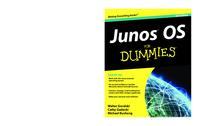
Junos OS For Dummies
Welcome to Junos OS For Dummies. This book provides you with a handy reference for configuring and running Junos software on Juniper Networks products.
56 Visitas | 51 Descargas | 2019-02-21 21:51:00 | moliver
More and more, Junos software is being deployed throughout the world running on Juniper Networks platforms designed for switching, routing, and security. You can find it in both the largest and the smallest service provider networks and in the networks at tens of thousands of offices, regional campuses, and data centers of enterprise organizations, as well as in the public sector and on educational campuses.
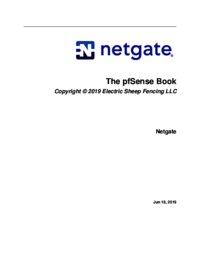
The pfSense Book
The most common deployment of pfSense is a perimeter firewall. pfSense accommodates networks requiring mul- tiple Internet connections, multiple LAN networks, and multiple DMZ networks. BGP (Border Gateway Protocol), connection redundancy, and load balancing capabilities are configurable as well.
88 Visitas | 105 Descargas | 2019-06-20 01:52:58 | moliver
pfSense configured as a LAN or WAN router and perimeter firewall is a common deployment in small networks. LAN and WAN routing are separate roles in larger networks.
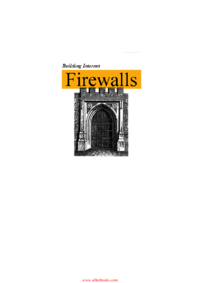
Building Internet Firewalls
Firewalls, critical components of today's computer networks, effectively protect a system from most Internet security threats. They keep damage on one part of the network - such as eavesdropping, a worm program, or file damage - from spreading to the rest of the network. Without firewalls, network security problems can rage out of control, dragging more and more systems down.
75 Visitas | 64 Descargas | 2019-06-20 01:59:53 | moliver
This book is a practical guide to building your own firewall. It provides step-by-step explanations of how to design and install a firewall at your site and how to configure Internet services such as electronic mail, FTP, the World Wide Web, and others to work with a firewall. Firewalls are complex, though, and we can't boil everything down to simple rules. Too much depends on exactly what hardware, operating system, and networking you are using at your site, and what you want your users to be able to do and not do. We've tried to give you enough rules, examples, and resources here so you'll be able to do the rest on your own.
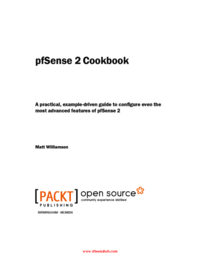
pfSense 2 Cookbook
pfSense 2 a practical guide.
62 Visitas | 70 Descargas | 2019-06-20 11:51:32 | moliver
pfSense is an open source distribution of FreeBSD-based firewall which provides a platform for flexible and powerful routing and firewalling. The versatility of pfSense presents us with a wide array of configuration options which, compared to other offerings, makes determining requirements a little more difficult and a lot more important. Through this book, you will see that pfSense offers numerous other alternatives to it any environment's security needs.
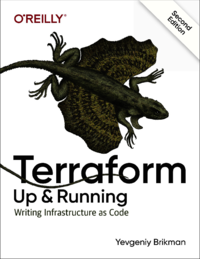
Terraform
Terraform is an open source tool that allows you to define your infrastructure as code
71 Visitas | 44 Descargas | 2020-05-28 15:59:27 | moliver
Terraform is an open source tool created by HashiCorp that allows you to define your infrastructure as code using a simple, declarative language and to deploy and manage that infrastructure across a variety of public cloud providers (e.g., Amazon Web Services, Microsoft Azure, Google Cloud Platform, DigitalOcean) and private cloud and virtualization platforms (e.g., OpenStack, VMWare) using a few commands.
Contribuir
Usted puede contribuir con Libros UCLV, es importante para nosotros su aporte..
Contribuir